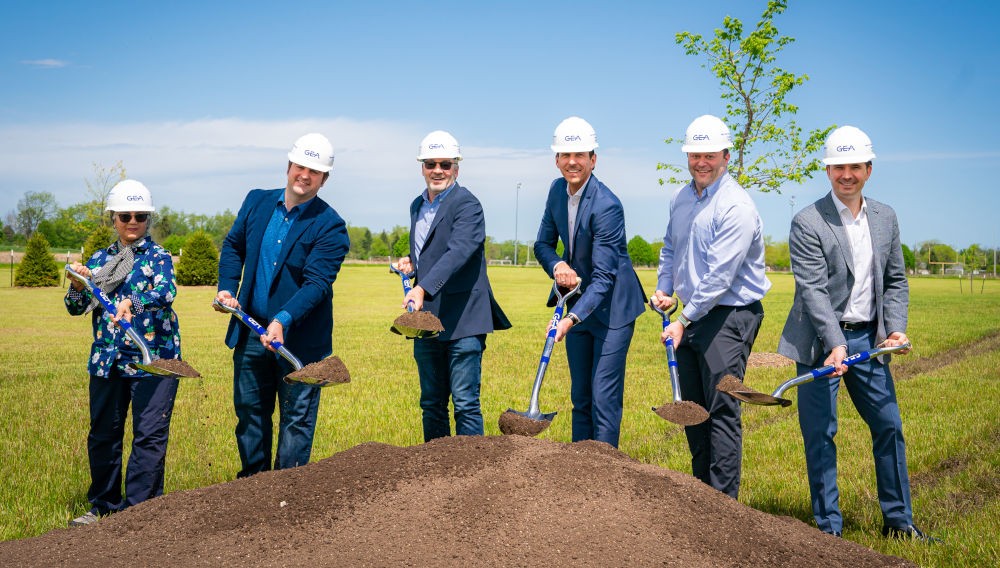Gea builds new technology centre for alternative proteins
Wisconsin | GEA has begun construction of its technology center for alternative proteins in Janesville, WI (USA). Scheduled to open in 2025, the center will scale up the production of novel plant-based, microbial, and cell-based foods. Here, GEA aims to support manufacturers in meeting the demand for complementary proteins and ingredients to traditional animal-based products.
“This investment underscores our commitment to innovation and sustainability in the food industry,” said Arpad Csay, who leads GEA’s new food activities in North America, at the groundbreaking ceremony on May 8, 2024. The center will house pilot lines for cell cultivation and precision fermentation, bridging the gap between benchtop and commercial production of alternative proteins.
Educational cluster for food technology and the local economy
Senior GEA representatives have emphasized the importance of this project as an engine for future growth and innovation in the Midwest, a region with a strong agricultural tradition. Arpad Csay: “Novel food production methods are going to gain prominence in the coming decades. This development will require a diverse pool of skilled professionals from operators in the plants to bioprocessing engineers designing production systems and scientists pushing boundaries through research and development. Our technology center will help develop this future workforce by educating students and young professionals about the underlying biology and bioprocesses. We are excited to work with community colleges and universities to build these competencies in the region.”
Pioneering project aligned with sustainability goals
All of the energy needed for the 1,200-square-meter building will be obtained from renewable sources. For instance, heat pumps and systems powered by electricity will replace the natural gas conventionally used for building technology and process equipment. A ground-mounted photovoltaic system is to generate 290 MWh of electricity per year, exceeding the energy requirement by at least a quarter. The surplus energy will be fed into the grid. This photovoltaic system is expandable, so that green energy can continue to be generated when process demands increase in the future. This setup underscores GEA’s strategy to become a net-zero operation by 2040.
Keywords
research proteins company news
Source
BRAUWELT International 2024
Companies
- GEA Group Aktiengesellschaft, Dusseldorf, Germany


